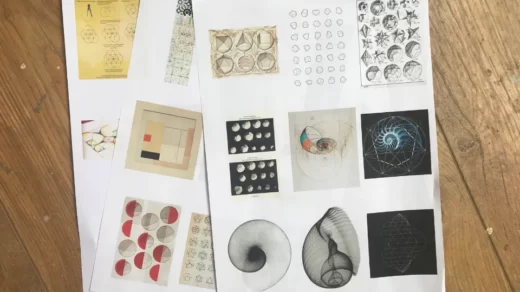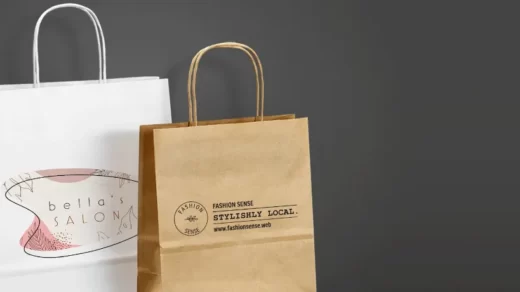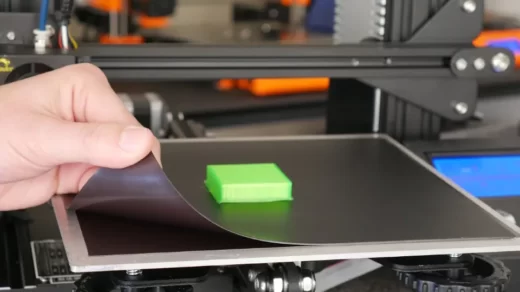What is pad printing? Pad printing, also called tampography or tampo printing, is the process of transferring a 2-D image onto a 3-D part. An etched plate, also referred to as a cliche, and a pad are used in the offset printing process to transfer the image.
By using pad printing, it is now possible to print all kinds of products with complicated shapes, including curved (convex), hollow (concave), cylindrical, spherical, compound angles, textures, etc. which were not available with traditional printing processes.
To learn more about the process, this article will explain how it functions as well as its benefits and drawbacks and typical applications.
Table of Contents
What is Pad Printing?
Pad printing is the process of printing a two-dimensional image on a three-dimensional object.
It is also called tampography or tampo printing and is basically an indirect photogravure process. This indicates that the method entails using a silicone pad (also known as an indirect offset or gravure) in a printing machine or other piece of printing equipment to transfer an image to the medium or substrate.
It is a valuable process in the printing industry because it can print on irregularly shaped and surfaced objects, print finely detailed images with excellent quality, and print complex substrates at a respectable rate.

A flat printing plate with the image is etched, and ink is then applied. The ink is then transferred from the plate to the object using a smooth-surfaced, chemically resistant silicone pad (pad printer). The process gets its name from the silicone pad that is used in the pad printer.
Since silicone does not absorb the ink into itself, it is used as the transfer medium.
Read More: What Is An Inkjet Printer?
How to Pad Print?
Step 1: The engraved (etched) artwork area of the pad printing plate is covered by the closed (sealed) ink cup, which also fills it with ink. The home position is what this is.
Step 2: The closed ink cup moves away from the engraved artwork area, removing all extra ink and revealing the filled-with-ink engraved image. The ink adheres to the transfer pad and later the item to be printed because the top layer of ink becomes tacky as soon as it is exposed to the air.
Step 3: Momentarily, the printing plate is briefly pressed against by the transfer pad. When the pad is compressed, air is forced outward, which causes the ink to “lift” (transfer) from the engraved artwork area onto the pad.
Step 4: The sticky ink film inside the area of the engraved artwork is picked up on the transfer pad as it is lifted away. The printing pad’s plate still has a small amount of ink in it.
Step 5: The ink cup advances with the transfer pad to cover the area of the printing plate with the engraved artwork. In preparation for the subsequent cycle, the ink cup once more pours ink onto the plate’s engraved artwork image.
Step 6: The ink layer picked up from the printing plate is transferred to the product surface as the transfer pad presses down onto the item. One print cycle is then complete when it lifts off the substrate and moves back to its starting position.
Advantages of Pad Printing
Due to a number of factors, pad printing is crucial to many industries. Below are a few reasons why you should consider the process:
- Compatible with Different Surfaces: Whatever the surface, the process can print on it. When using the process, it makes no difference if the surface is small, irregular, or curved.
- Compatible with Different Materials: It works with any kind of substance. As a result, you can print on objects made of metal, plastic, glass, and edibles like candy.
- Cost-Effective: The method is simple to use and economical to carry out. As a result, it is a viable printing option for any company seeking identification, traceability, and personalization at a low cost.
- It Delivers Quality Printing: On any surface, the printing process produces a clean, high-quality finish. No matter the shape or composition of the object, this applies. As a result, it is crucial when printing on tiny parts, like, very tiny electrical components.
- It Supports Different Color options: Tampo printing uses a variety of colors to meet the various aesthetic needs of various industries. When the right color isn’t available, you can still create it by mixing colors with the appropriate technology and tools.
Disadvantages of Pad Printing
It has shortcomings even though it seems like a miraculous printing process. Here are a few drawbacks of the procedure.
- It is Slow: The procedure is more cumbersome than other printing methods, like hot stamping. Therefore, it might not be the most efficient and productive printing technique
- It has a Lesser Printing Area: Small images can be printed using tampography on big things. There is a restriction on the area you can work with, though.
- It Can Lead to Color Issues: When printing large blocks of color, color problems such as tonal inconsistencies can appear. The quality will suffer, prices will go up, and raw materials will be wasted as a result.
Tips for Successful Pad Printing
The procedure is extremely intuitive, making learning simple. Successfully printing parts, however, is more dependent on experience-based knowledge. You can move closer to a successful process by following the advice that is provided below.
Select the Right Type of the Pad
Successful printing of parts depends on choosing the appropriate pad for your process. You should consider the project’s needs before making a choice because the pads are available in a variety of shapes, sizes, and mechanical properties. Here are a few suggestions for choosing pads.
- Hard pads have shaper contours and finer lines and are suitable for hard, irregular surfaces
- Air can easily escape from steep pads that trap it during pickup and transfer.
- As a result, printing distortion is decreased when using large pads.
Mixing Ink
It is normal to think about blending the ink when the desired color is not available. The right pad printing services (like RapidDirect) should have the necessary pad printing technology, tools, and experience to define a color that corresponds to the desired color. This will make it possible to mix ink.
No Excessive Pad Pressures
Avoid using too much pad pressure when printing because it can result in over-compression and split pads. By adjusting the downstroke and allowing the ink to flow normally, you can accomplish this. Mechanical issues may lead to excessive pad pressure. As a result, you need to regularly inspect your machine.
Choose High-quality Equipment
Ensure that you are printing with high-quality equipment. The closed ink-cup printer is the most popular type of pad printer even though all three deliver. You can also look for automation, which boosts output and lowers the possibility of error.
Pad Printing Vs. Screen Printing: Which is Right for You
A flat object is printed with an image using the screen printing technique, which involves transferring ink through a screen overlay to the flat object beneath the screen using an ink-blocking stencil that contains the design. By pressing the screen with a squeegee or roller, ink is transferred.
Multiple color printing is possible with both screen printing and pad printing. But unlike the latter, which calls for mixing the colors, screen printing involves applying the hues one at a time, producing excellent color saturation and opacity.
Screen printing is a better technique for large-scale projects that involve printing on large, flat, and smooth objects made of paper, metal, and wood as opposed to pad printing, which is appropriate for smaller objects of various shapes. However, because it is less expensive and simpler to set up than screen printing, pad printing is preferable.
Related Reading:
What is the Future of Pad Printing?
Finding a tool that bridges the past and future is essential, both on the production floor and in budget meetings, given the rapid pace of medical and technological design advancements. A tried-and-true technology called pad printing is adaptable to a wide range of materials and substrates. As market niches continue to grow and get smaller, the need for customized material deposition will only get stronger.
Pad printing can be used for non-decorating, non-identifying purposes, and designers, manufacturers, engineers, and managers would be wise to investigate this. It has been demonstrated that the best tool is one that can be used for a variety of tasks and is excellent for solving problems. All you need to do is add a healthy dose of imagination and creativity.
Conclusion: What is Pad Printing?
Using a process called pad printing, 2D images that have been engraved on printing plates are transferred to objects of various shapes and sizes. It is extremely precise, effective, and accurate.
Simple to complex printing has been achieved with pad printing. As a result, it is more productive and efficient.
However, picking the best supplies and parts shouldn’t be done before you fully comprehend the procedure. As a result, you have a thorough understanding of the procedure after reading this article’s in-depth discussion of it.
Read More: What is a Resin 3D Printer?








